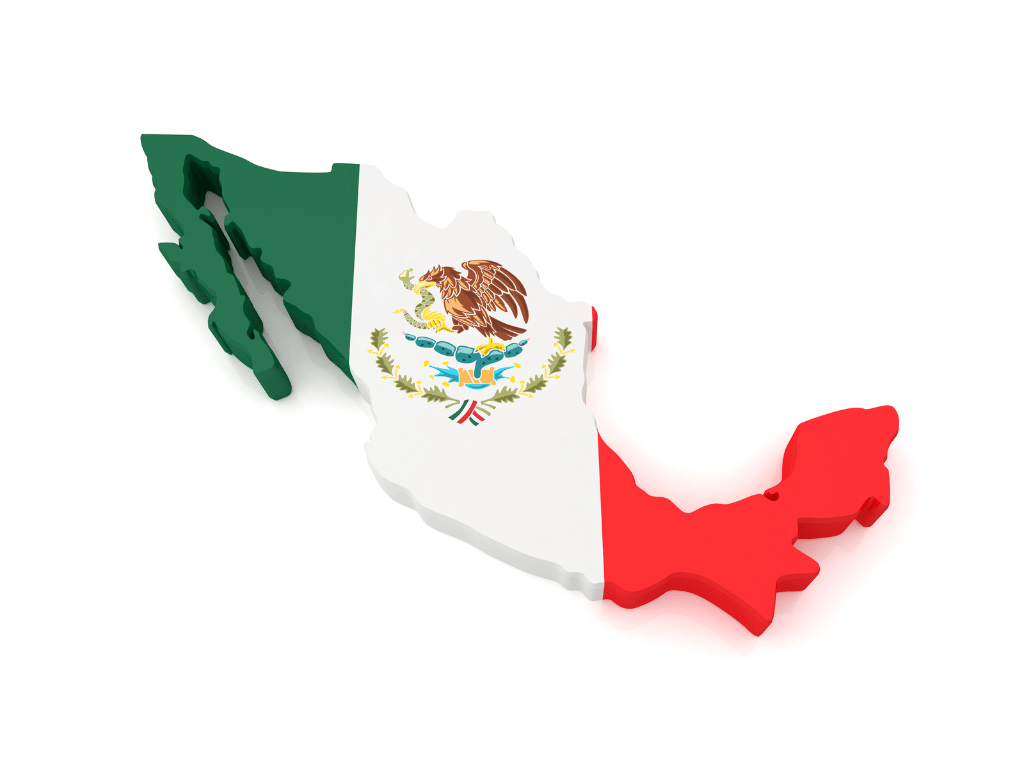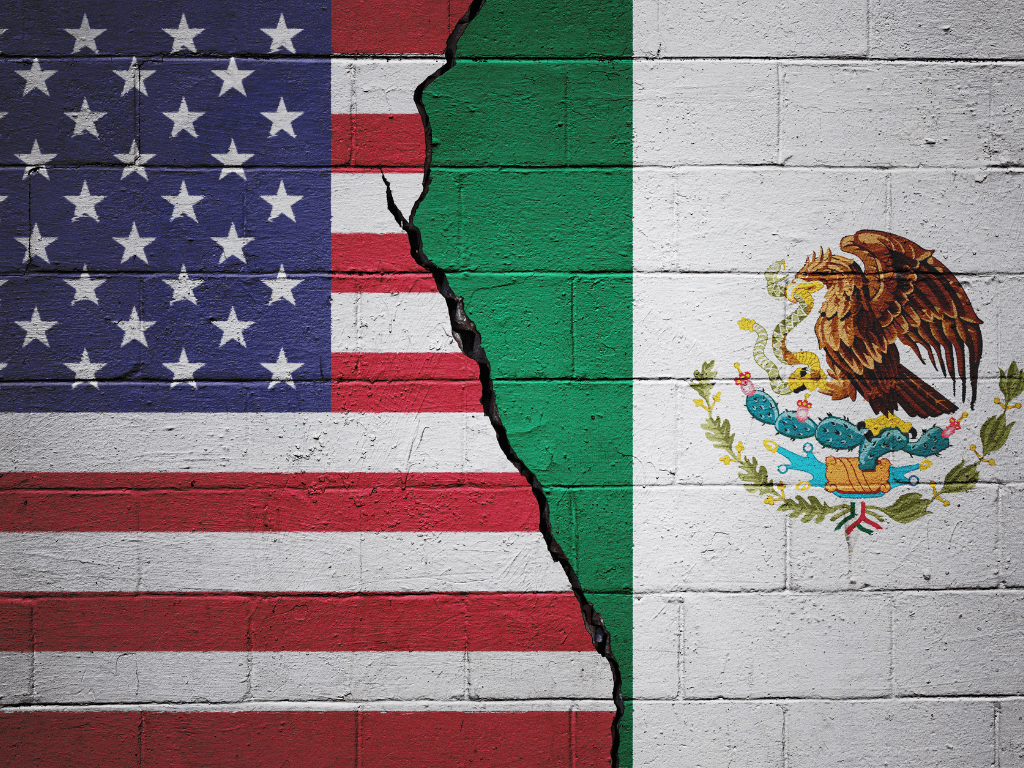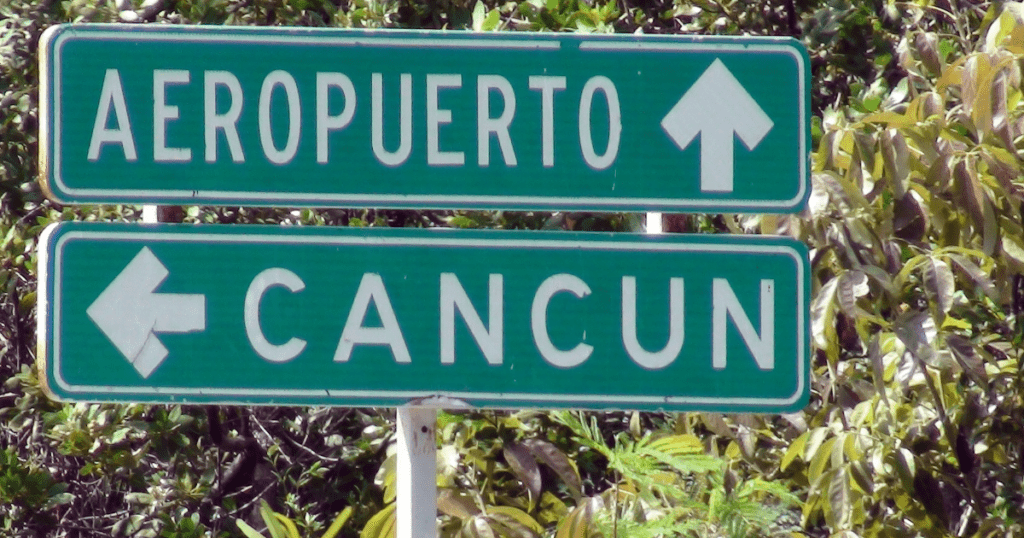Unveiling the Safety Reality in Mexico

Is Mexico Safe?
Mexico is generally safe for tourists, but it is important to be aware of the risks and take precautions. If you plan to travel to Cancun or some other Mexico destination, you will be as safe a most other vacation hot spots.
Do your research. Before you travel, learn about the specific region of Mexico you are visiting and the safety risks associated with it. The U.S. State Department website has a travel advisory for Mexico that provides information on crime, kidnapping, and other safety concerns.
Use common sense. Be aware of your surroundings and take precautions to protect yourself from petty crime, such as pickpocketing and purse snatching. Avoid flashing expensive jewelry or electronics, and don’t carry large amounts of cash.
Stay updated on public health concerns. Mexico has a number of public health concerns, including Zika, dengue, and chikungunya. Make sure you are up-to-date on your vaccinations and take precautions to avoid mosquito bites.
Exercise normal precautions. Just as you would in any other country, take normal precautions to protect yourself while in Mexico, such as locking your hotel room door and not leaving valuables in your car.
Avoid traveling at night. Petty crime is more common at night, so it is best to avoid traveling after dark if possible.
Be aware of your surroundings. Don’t walk alone in unfamiliar areas, and be aware of your surroundings when you are in public places.
Trust your instincts. If you feel unsafe, don’t be afraid to leave the situation.
Report any crimes to the police. If you are the victim of a crime, report it to the police as soon as possible.
By following these tips, you can help ensure a safe and enjoyable trip to Mexico.
Specifically, is Cancun safe? Canun is generally safe. The Mexican government takes particular care of this tourist hotspot.
Comparing Crime Rates: Mexico’s Crime Rate versus the United States
Oh, the joy of comparisons! In this case, we have the Mexico murder rate versus the US, which never fails to ignite both passionate and captivating discussions. When it comes to comparing cities, it can feel like an intense contact sport! For today’s showdown, we bring you the ultimate clash of Mexico versus U.S. cities in a comprehensive analysis of crime rates.
We all understand that a city’s safety plays a pivotal role in determining the quality of life for its residents. So, let’s fasten your seatbelts and meticulously examine the crime rates of these cities! What factors contribute to these crime rates? What are the advantages and disadvantages of each? Are they similar or distinct? Brace yourself, for we are about to unravel the truth!
Examining Crime Rates: A Comparative Analysis of Mexico and the United States

The crime rate plays a crucial role in assessing the economic, social order, and safety aspects of a country. While certain countries, like Mexico, exhibit higher levels of criminal activity compared to the United States, others have significantly lower rates than the average American city.
Therefore, when directly comparing Mexico and the United States, it becomes vital to take into account essential factors such as geography, population size, and per capita income to accurately predict the likelihood of crime in both nations. In terms of overall crime, recent data published by the World Bank indicates that Mexico’s rate surpasses that of the United States.
For instance, in 2014, Mexico reported over 50 homicides per 100,000 people, while the United States recorded just over 4. This significant disparity can be attributed to factors such as poverty levels, drug cartel activities, and widespread corruption in Mexico, which are not prevalent to a similar extent in the United States. However, it is worth noting that Mexico has stricter laws regarding specific crimes, particularly in relation to gun ownership. Firearms are heavily regulated, and the majority of cases prohibit their purchase for personal use in Mexico.
Geographic positioning and policy decisions of a nation
Certain regions within the United States may exhibit higher crime rates than Mexico as a result of their geographic location and the policies implemented by their government concerning immigration or criminal justice reform. A prime example is San Francisco, which records approximately double the number of homicides per capita compared to its neighboring cities in California.
This discrepancy can be attributed to factors like its diverse population and court rulings regarding the supervision and monitoring of individuals after their release from jail. Additionally, it is important to consider that, within the United States, smaller rural areas typically experience significantly lower levels of criminal activity than larger cities such as New York City or Los Angeles.
The dense urban concentrations in these metropolises often give rise to various social issues, including heightened criminality such as gang violence or theft targeting economically disadvantaged households lacking the resources or community support to effectively protect themselves.
Socioeconomic structure
Taking an objective perspective on both statistics, we can identify various reasons why Mexico might exhibit higher levels of criminal activity compared to the United States. However, it is important to acknowledge that spot-check areas can significantly differ within each country, influenced by numerous variables such as socioeconomic structure and the effectiveness of local law enforcement. To gain a deeper understanding of how these nations compare, particularly regarding violent crime, the following section of this article will delve further into this topic.
According to data from the UNHCR, Mexico records a murder rate of 16.9 per 100,000 inhabitants, positioning it as the 15th highest in the world and seven times higher than that of the United States. This stark contrast is evident when comparing Mexico’s murder rate to that of the United States. For instance, in 2019, Mexico City reported a total of 2,200 homicides, while New York City recorded 289. The Inter-American Development Bank estimated that approximately 5.5 million individuals in Mexico fell victim to various forms of violent crime in 2018.
Violent Crime in Mexico Compared to the U.S.

Violent crime in Mexico is widely considered a significant issue. Data from 2019 shows that violent offenses amount to 70.6% of the crimes reported in Mexico, compared with only 8.7% in the United States. While violent crime is prevalent in both places, it’s much more frequent and severe in Mexico relative to the U.S. Some might argue that stereotypes about safety are to blame for people’s perceptions of Mexico’s security.
Furthermore, some believe these preconceived notions cause people to remain unaware of other issues like organized crime and corruption. But on the other hand, those who live in Mexican cities, or have traveled there, understand all too well how much of a problem violence can be in certain areas. Though comparing Mexico to the United States on this topic is indeed difficult due to their cultural dissimilarities, it’s apparent that both countries should put more resources and effort into reducing the number of violent crimes committed each year.
This could involve lawmakers punishing perpetrators more severely, developing better monitoring systems, or increasing police presence in high-risk regions. No matter what measures each country decides to take, there’s no denying that violence remains a challenge they must confront together if they hope to eventually improve their nations’ statuses when it comes to public safety—which is why taking a look at homicide rate comparisons between Mexican cities and their United States counterparts is an important consideration, especially for Mexico murder rate vs the US.
Comparison of Homicide Rates
When examining homicide rates, the comparison between Mexico and the United States becomes more nuanced than a simple country-to-country analysis. In Mexico, for instance, the majority of homicides are committed with firearms and are primarily linked to drug cartels rather than being associated with gang activity or domestic violence. From an international perspective, Mexico’s homicide rate compares favorably in this context. However, when comparing homicide rates between cities in Mexico and the United States, significant differences emerge.
For example, certain Mexican cities, like Ciudad Juarez, have reported substantially higher homicide rates compared to economically and demographically comparable cities in the United States. Given the inherent complexities of cross-border comparisons, it is crucial to exercise caution when assessing the intricate relationships between crime, culture, and specific public safety measures, such as homicide rates. Nevertheless, it is evident that even after accounting for disparities between urban areas, there are significantly higher reported instances of homicide in many Mexican cities compared to their counterparts north of the border.
Understanding this, further exploration of comparative data for other types of criminal offenses is essential to comprehending crime rates among cities in both countries. Therefore, we will now delve into robbery and burglary rates in cities across Mexico and the United States.
Useful Information
Comparing homicide rates between the United States and Mexico presents complexities due to divergent factors contributing to these crimes. Specific cities in Mexico exhibit significantly higher homicide rates compared to their counterparts in the United States. Consequently, a more comprehensive analysis and exploration are necessary to facilitate a better comparison of other criminal activities, such as robbery and burglary, and gain a deeper understanding of crime rates among cities in both countries.
Robbery and Burglary Comparisons

According to the International Crime Statistics Database of the United Nations Office on Drugs and Crime, Mexico has consistently maintained a slightly higher robbery and burglary rate than the United States in recent years. In 2017, for instance, Mexico recorded 204.3 robbery incidents per 100,000 people, while the United States reported only 121.7. Similarly, Mexico had a burglary rate of 2,844 per 100,000 people compared to 1,924 in the United States.
These statistics clearly indicate that crime poses a significant challenge in Mexico compared to its neighboring country. However, it is worth noting that some experts argue that this comparison may not provide a complete picture, as it fails to account for economic inequalities between Mexico and the United States. It could be argued that higher levels of poverty in Mexico may create more opportunities for criminal activity, unlike in the United States where poverty rates are generally lower.
Nonetheless, from a statistical standpoint, both nations face significant hurdles in protecting their citizens from robberies and burglaries. Therefore, the subsequent section will examine drug-related crimes and explore how Mexico and the United States address this persistent issue.
Examining Drug-Related Offenses of Mexico and the United States
In addition to analyzing robbery and burglary rates, it is crucial to consider the rates of drug-related crimes to gain a comprehensive understanding of crime in both Mexico and the United States. However, reaching a consensus when comparing drug-related crimes between the two countries proves challenging.
While certain regions in Mexico have witnessed a significant increase in drug-related criminal activities over the past few decades, it would be premature to conclude that the United States experiences less drug-related crime. For instance, The Washington Post reported that in 2016, the United States recorded an astonishing figure of 42,000 deaths from opioid overdoses, surpassing any other country in the world.
Increased Drug Users
Despite the notable surge in opioid use within the United States, experts argue that Mexican cartels are thriving, benefiting from the growing number of drug users. According to research conducted by the Government Accountability Office (GAO), Mexican cartel profits have skyrocketed since 2007, owing to increased drug availability and rising demand for substances like fentanyl and crystal methamphetamine.
It is important to acknowledge that while opioids pose a significant problem in the United States, Mexican criminal organizations continue to amass substantial profits by operating illegal drug networks across North America. Given the intricate nature of drug-related crime in both Mexico and the United States, it becomes evident why further investigation is crucial to gaining a more comprehensive understanding of this contentious issue. Consequently, our focus now shifts to a more nuanced analysis of another form of criminal activity: marijuana offenses.

Marijuana Crimes
Marijuana-related offenses encompass a broad spectrum of crimes, both at the federal and state levels. In Mexico, the laws surrounding marijuana are complex, with some states decriminalizing certain forms of possession and use while others maintain stricter penalties. Despite the recent passage of a bill legalizing medical marijuana in Mexico, recreational marijuana remains largely illegal under federal law. In contrast, the United States exhibits a varied landscape where each state establishes its own regulations for marijuana, ranging from full legalization for recreational or medical purposes to complete prohibition.
Currently, 33 states have legalized the medical and recreational use of marijuana. Naturally, with different drug laws in place on each side of the border, it is reasonable to expect that the prevalence of marijuana-related crimes would reflect these diverse regulations. For instance, in states where marijuana is legal, the increased availability and reduced prices may lead to higher rates of marijuana-related offenses. However, an opposing viewpoint suggests that with regulated access to marijuana, governments have better control over the product, potentially resulting in lower rates of marijuana-related crime in legalized areas.
Regardless of one’s stance in the ongoing debate, it is becoming increasingly evident that both sides have valid arguments regarding the legalization of marijuana. As ongoing research explores the costs and benefits associated with legal drug use in societies and nations, a better understanding of how medical and recreational marijuana use fits within our global communities is being sought. With this in mind, we now turn our attention to another significant concern affecting cities across the country: crime related to poverty and its impact on local areas.
Poverty-Related Crimes in Mexico & the U.S.

Examining poverty-related crimes in Mexico and the United States provides intriguing insights. While poverty-related corruption has decreased in the United States, Mexico continues to grapple with such crimes, even in 2020.
Studies indicate that approximately 37% of households in Mexico (equivalent to around 19 million homes) live below the poverty line, in contrast to about 12% in the United States. This disparity has sparked discussions on the need for greater attention to poverty-related crime on both sides of the border, acknowledging the potential variations in crime trends between the two countries. It is crucial to consider how poverty intersects with other factors influencing criminal activity, including limited access to economic opportunities and quality education.
These circumstances can drive individuals living in poverty to seek alternative means of survival, potentially exposing them to involvement in activities such as drug trafficking or human smuggling. Regrettably, certain segments of the population, particularly women and children, are often viewed as vulnerable targets for exploitation and crime in Mexico, lacking adequate assistance and protection from authorities.
High Level Crime Areas
When examining regions with elevated crime levels, it is crucial to acknowledge both shared and distinct characteristics between Mexico and the U.S. in this regard. While poverty-related crimes are prevalent in numerous cities in both countries, certain areas within these cities experience higher levels of criminal activity compared to others. For instance, in the U.S., corruption issues are often concentrated in inner-city neighborhoods of major metropolitan areas such as Chicago and New York City.
Similarly, in Mexico, poverty-related crimes tend to be more prevalent in deteriorated urban centers within larger cities like Mexico City and Tijuana. This suggests a commonality between the two countries in terms of the correlation between poverty levels and increasing crime rates that impact urban areas. However, this correlation is not universally observed across all regions. In the U.S., certain rural communities have faced higher rates of violent crime despite significantly lower poverty rates compared to urban centers like Detroit or Baltimore.
In contrast, while certain towns and villages in the Mexican countryside may experience an upsurge in drug trafficking and gang activity, their overall rate of violent crime remains notably lower than that found in many large cities. These examples illustrate how the underlying concept of poverty-related crime can manifest differently depending on the location. They also emphasize the complexities involved in assessing crime rates based solely on economic conditions or geographic areas.
To gain a comprehensive understanding of how crime occurs and influences life in Mexico and the U.S., it is necessary to analyze them through multiple perspectives, including the distinction between urban and rural regions.
Rural vs Urban Areas

There is a notable contrast in crime rates between urban and rural areas in Mexico and the United States. In Mexico, urban areas experience significantly higher crime rates compared to rural regions. This has resulted in many cities and towns in Mexico becoming characterized by violence and lack of safety, even during daylight hours. For instance, major cities like Mexico City and Ciudad Juarez have reported homicide rates up to eight times higher than the national average. These urban areas also suffer from a strong presence of drug cartels, leading to increased levels of organized crime and drug trafficking.
In contrast, the United States exhibits higher crime rates in urban areas compared to rural ones. The higher population density in urban areas creates more opportunities for crime and provides criminals with greater access to resources, thereby contributing to increased overall criminal activity. Cities like Baltimore and Los Angeles have had persistently high crime rates over the years due in large part to this dynamic. However, certain rural areas also face challenges with elevated crime levels due to limited law enforcement manpower and resources, coupled with lower incomes and education levels that can contribute to criminal behavior.
Murder Rates of Mexico vs United States
In recent years, the media and social media have extensively covered discussions on safety in various countries, often focusing on comparing murder rates. One comparison that frequently draws attention is between Mexico and the United States. Mexico, renowned for its vibrant culture and historical significance, unfortunately has been associated with high crime rates, particularly in terms of murder. On the other hand, the United States has its own safety concerns. But how do these two countries compare when it comes to murder rates?
According to data from the United Nations Office on Drugs and Crime (UNODC), Mexico’s murder rate per 100,000 inhabitants is considerably higher than that of the United States, based on the most recent available report. It is important to recognize that these rates can vary significantly from year to year and across different regions within each country, influenced by various socio-economic and political factors. The elevated murder rate in Mexico can be attributed to several factors, including drug trafficking, gang violence, corruption, and socio-economic challenges. However, it is crucial to note that these figures represent averages and may not reflect the safety situation in tourist areas or major cities, which could be considerably safer than the national average.
Meanwhile, the United States, despite its lower average murder rate, still faces safety challenges. Gun violence and other forms of crime contribute to its murder rate, with notable variations among different states and cities. For example, larger cities tend to have higher murder rates compared to rural areas.
In conclusion, while there is a significant difference in murder rates between Mexico and the United States, it is essential to understand the intricacies behind these statistics. These rates do not necessarily determine the safety level of all regions within these countries. It is important to conduct thorough research and follow local guidelines when visiting or relocating to a new area.
We still consider Mexico a great location for your vacation adventures.


